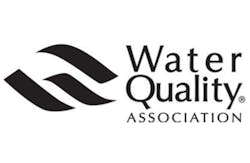1. The greatest errors in the process of obtaining water quality information usually occur in:
a. sampling
b. laboratory equipment and techniques
c. recording results
d. reporting results
2. When collecting a sample from a household faucet, it is good technique to first flush the waterline by turning the faucet handle wide open. (True or false)
3. How long should a three-quarter inch waterline that is 30 feet long be flushed to replace water in the line twice, if the flow is one-half a gallon per minute?
a. two minutes
b. three minutes
c. four minutes
d. five minutes
4. Free residual chlorine refers to elemental chlorine (Cl2), and combined residual chlorine refers to hypochlorous acid (HOCl) and the hypochlorite ion (OCl–). (True or False)
5. The coliform group of bacteria are called “indicator organisms” in drinking water analyses. (True or False)
6. Fecal coliform grow at 112o F in laboratory analyses. (True or False)
7. Coliform bacteria can be selectively trapped and then grown within 24 hours into visible colonies on a 0.45 micron pore size filter membrane. (True or False)
8. Calcium and magnesium are the only two cations in water that can cause water hardness. (True or False)
9. Anions are not a factor in water hardness determinations. (True or False)
10. Results from most probable number (MPN) coliform tests of a water supply during one week were as follows:
Day S M T W TH F S
MPN/100 ml 48 60 4 21 6 7 26
Determine the (a) mean, (b) median and (c) geometric mean of the data in MPN/100 ml.
